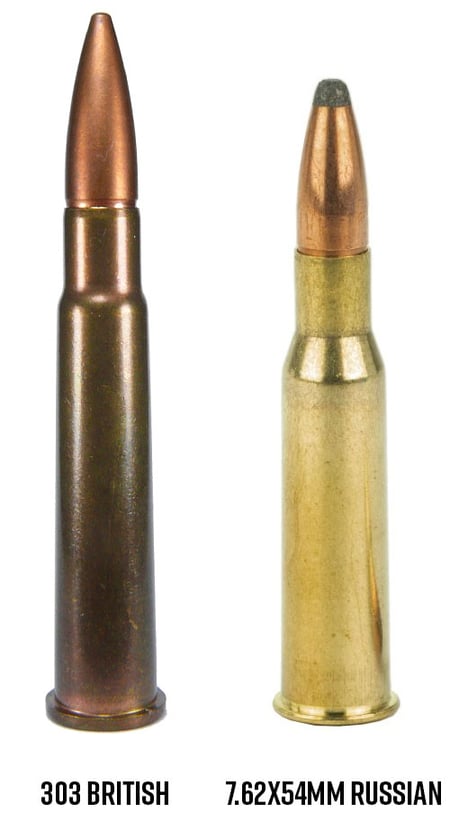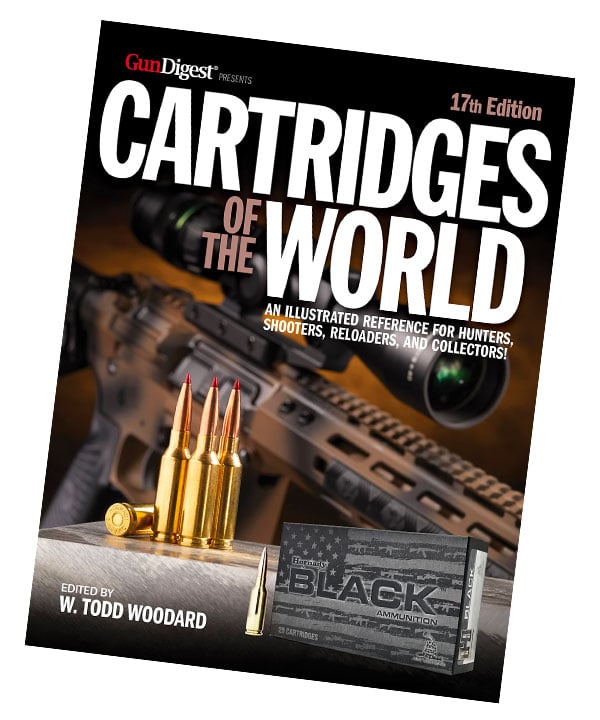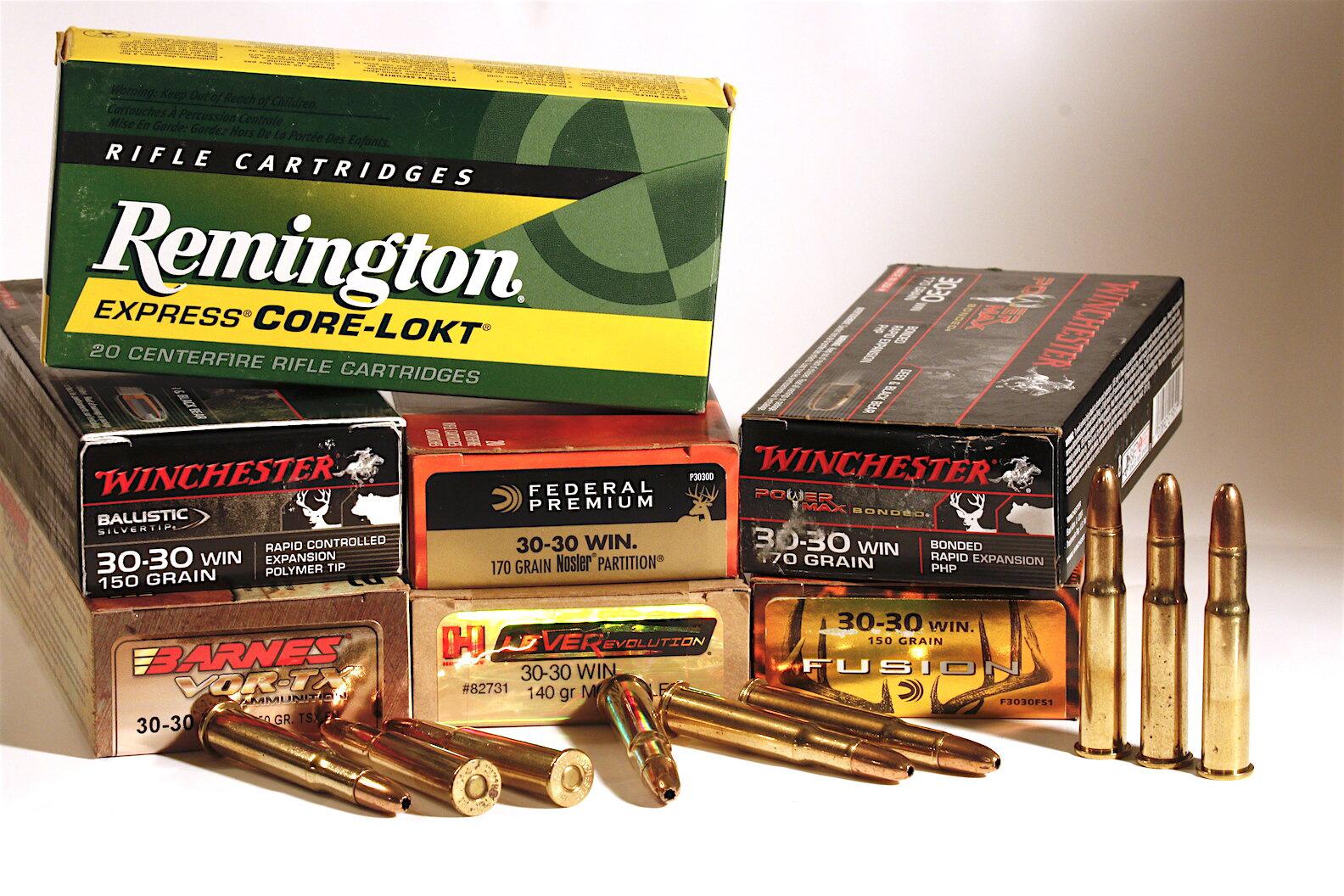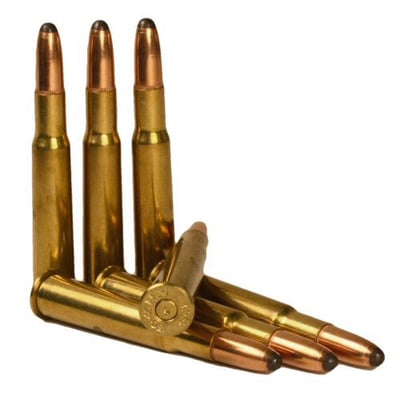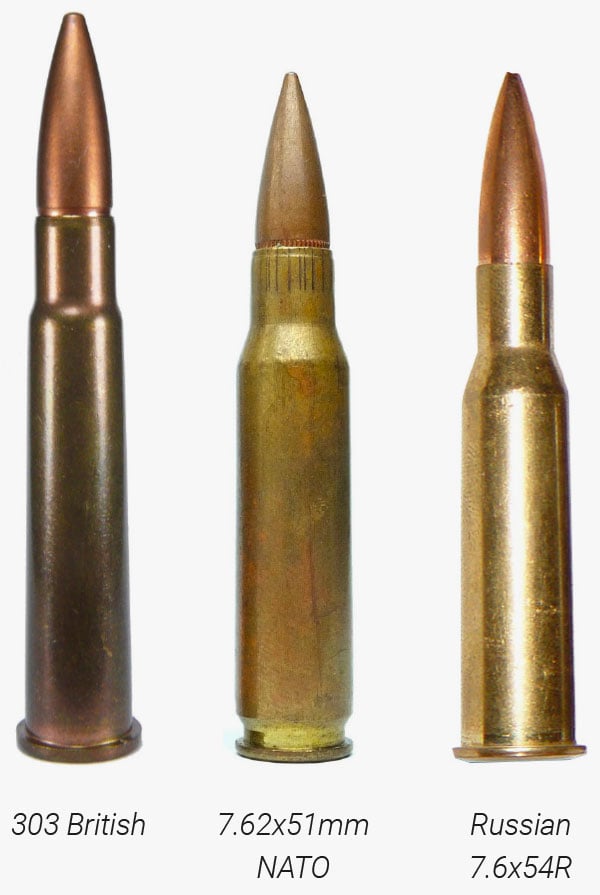Ultimate Guide to the .30 Calibre
The history of the group of .30”/7.62mm cartridges as with most firearms calibres, can be attributed to military need and development. The introduction of muzzle-loading muskets and rifles to replace the more traditional missiles launching systems like the long bow and cross bow, probably started around the 14th/15th century. Technical developments in design and manufacture saw improvements and innovations in ignition systems, barrel quality, rifling, sights, ammunition and a slow but steady reduction in bore size. Simply put, rifles got more efficient and sophisticated, you did not need to be throwing, big, inaccurate, short range lead balls to be effective!
DOWNLOAD OUR
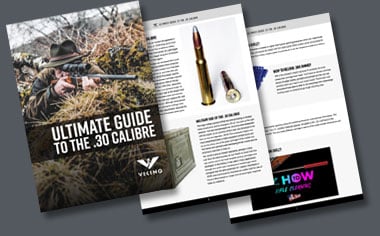 Ultimate Guide to the .30 Calibre
Ultimate Guide to the .30 Calibre
Down-Sizing
Over the centuries we have seen a continual down-sizing in both sporting and military bore sizes, normally generated by the latter group. So, .69/75” lead balls gave way to the generic .50”, .45” lead, then jacketed bullets. And by the end of the 19th century most major powers were experimenting with, or adopting calibres normally 7 to 8mm, or something around .30”. However, what interests us here is possibly the most prolific group, or to give it it’s true size; .308” Imperial or 7.62mm in Metric. But first we need to know what is and isn’t a .30” calibre, as to the novice, names can be confusing. However, we shall be looking at these as a few are still viable in the UK shooting scene.
It’s all down to bore/bullet size. Two good examples would be the 303 British and the 7.62x54mm Russian. Bear in mind we are talking about .308”, so don’t let the .303” and 7.62mm names confuse you, the former measures .310” and the latter .311/312”, both too wide for the .308” bore. Visually these two old timers are both rimmed, bottle-necked designs, when compared to the rimless 308 Winchester etc., so easy to tell apart. But if you are reloading, you must ensure you have the correct diameter bullets, if not you could be in serious trouble.
Without doubt, the most popular calibre, since its introduction into the world market as we shall see, is the 308 Winchester, with near all firearms manufacturers, regardless of country producing gun types to suit. Or, the older 30-06 Springfield, which in itself has been the wellspring for many other superb sporting cartridges. But we must go back even further to get to the first of the .30”s.
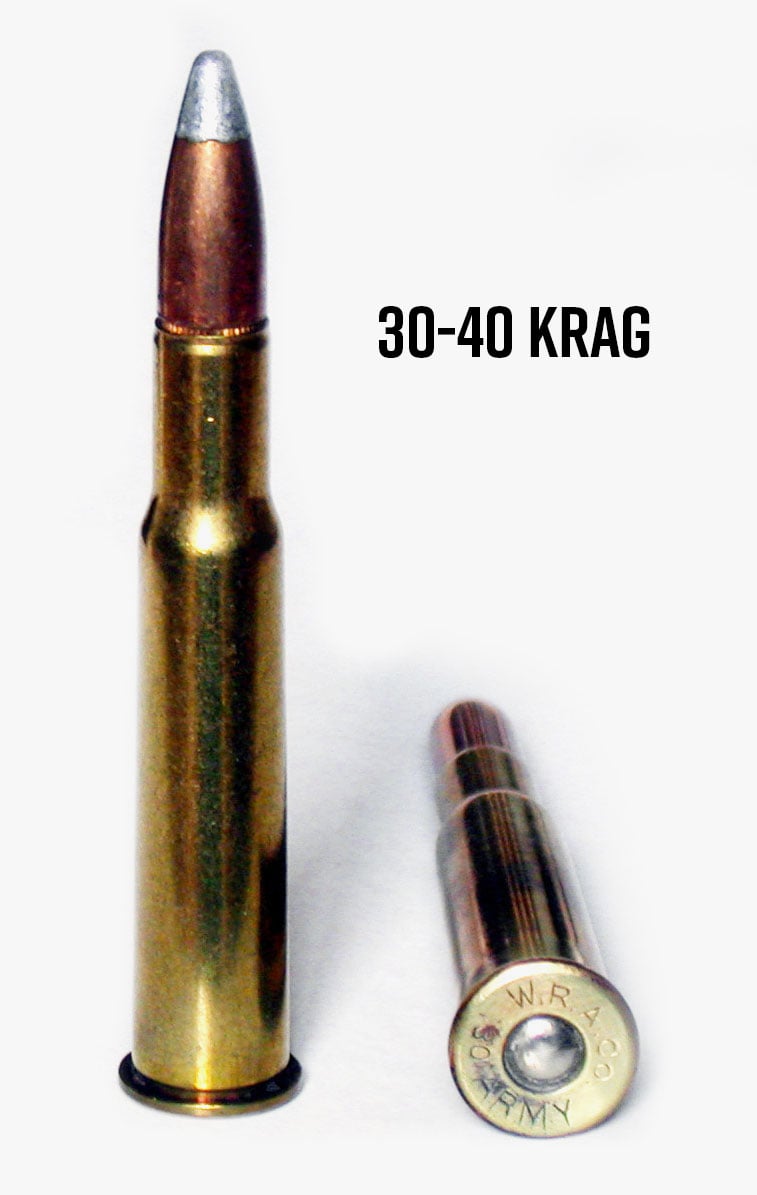
Krag, 30-30 and beyond
At the end of the 19th century the US Army was looking to replace their single, shot Trapdoor Springfield rifles and carbines in 45-70 Government chambering, with a modern, bolt-action repeater. Equally, come up with a .30” cartridge running on the then new and emergent, smokeless powders. Up until then blackpowder was the only propellant, which was far from ideal!
In 1892 they chose the Danish, Krag-Jorgensen M1889 with its curious, rotary drum magazine that could only be loaded by hand, via a side-mounted, fold-down draw-type system. It was slightly modified by the US, but compared to rifles like the Mauser 98 with its 5-round, clip-loading design it was inferior. The Krag was chambered in a rimmed, bottle-necked case called the .30 Army, better known as the 30-40 Krag. This nomenclature going back to the old way of identifying blackpowder cartridges by the calibre and the weight of the charge in grains, as in 45-70; .45” calibre, lead bullet with a 70-grain charge of BP. But in this case; 40-grains of smokeless under a .30” jacketed bullet.
Not ideal
Although the 30-40 Krag was a good cartridge and chambered in guns of the day and even a few today, combined with the short comings of the rifle it was not an ideal system and was withdrawn by 1903 in favour of a new calibre and rifle. The 1903 Springfield was heavily based on the M98 Mauser action, complete with 5-round clip-loading system and served the US forces until the introduction of the M1 Garand in WWII. Although, was still maintained as the official sniper rifle in the 1903 A4. And it fired the Ball Cartridge Calibre 30 of 1906, better known as the 30-06 Springfield.
Lessons learned from the .30 Army
The 30-06 Springfield was very much the wellspring for many, current US cartridges, regardless of calibre in one form or another, but its evolution was also quite interesting. Development started in 1901 and by 1903 it had been finalised as the US 30-03, with a 220-grain, round-nosed bullet (same as the Krag) doing 2300 fps. However, the switch by other powers to lighter/faster, pointed (Spitzer-type) bullets was not lost on the US, who re-designed the 1903. And in 1906 the 30-06 was born. Another plus was it was rimless, so easier to load and feed in rifles and machine guns than the rimmed 303 British and 7.62x54 R Russian.
The rimless, 30-03 case was modified with a shorter neck that reduced its length to 63mm, to use the new, 150-grain bullet that offered a ballistic coefficient (BC) of 0.405 at 2700 fps/2429 ft/lbs. Although now obsolete, the 30-03 case was used later as the base for both the 270 Winchester and the 280 Remington sporting rounds. Even today and in the face of modern competition, the 30-06 is probably one off the most popular American cartridges, with an equally large, worldwide following!
An equally significant milestone in sporting ammunition was reached by another iconic, American rifle/cartridge combination in 1894. That being Winchester’s 1894 lever-action rifle firing the equally new and smokeless-powered 30-30 Winchester Centre Fire (WCF), better known as the ‘thirty thirty’. So inside four years, two calibres had been developed that would take the shooting world by storm and still be as popular today as they were back at the turn of the century. And also generate many other, .308” designs and a number of wildcats too, for all needs, truly, the .30” cal had come of age!
Spoilt for choice
If you want to see how many .30” calibre ammunition developments there have been, just buy a copy of ‘Cartridges of the World’, by Frank C Barnes and Stan Skinner, with over 1500 individual calibres listed and explained; now heading for its 17th edition. An excellent book and great reference source for many years. However, this is the UK, and a lot of the entries have little to no relevance, as to what we use or might use. This guide is aimed at the British shooter who and when compared to the USA is perhaps a bit more conservative and also has a lot less choice and control on both guns and ammo that are imported. Here’s an example, the 30AR (essentially a short 308 Win) was designed for AR15-type platforms and has a lot to offer. The chances of finding a rifle, let alone factory ammo in the UK are negligible.
A better list might be to get a current reloading manual and turn to the .30” cal section, which would give more of an idea of what’s current, available and also still popular. But the same UK caveats apply as to availability and access.
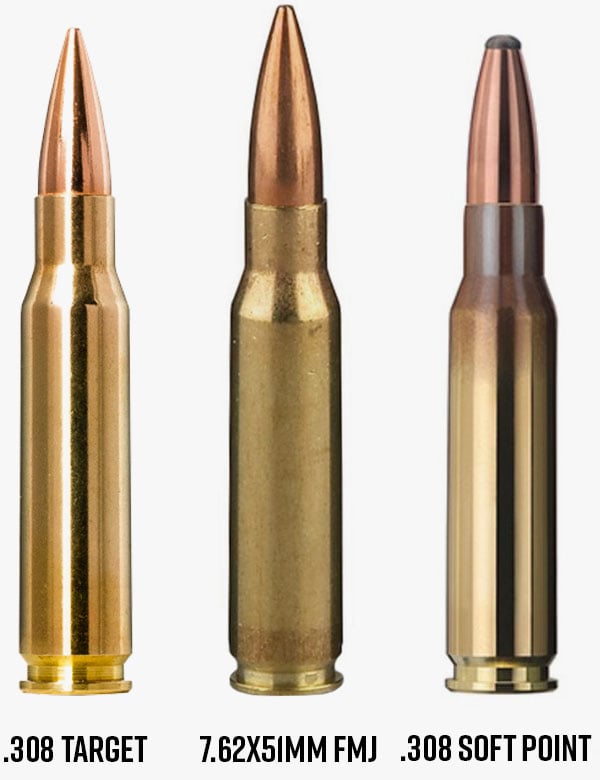
Match, general or hunting?
For the shooter, ammo choice breaks down into three areas;
MATCH/TARGET - high spec build with high BC bullets for best accuracy and consistency.
GENERAL - club shooting and competition like Service or Practical Rifle where you can buy full metal jacket (FMJ) Service-type ammo in bulk for your needs. A good example here would be NATO-spec 7.62x51mm fodder. A word of caution here, some Eastern European makes might have steel cases that could be Berdan-primed (twin, offset flash holes) so no good for reloading. And possibly corrosive primers, that could wreck your barrel if not cleaned immediately after use.
HUNTING - the criteria is that you must use expanding bullets by law, be they hollow or soft point or ballistic tip (no FMJs) and depending on species must be able to generate set parameters for muzzle energy. 308s here should have very little trouble doing that. A future consideration in this category is non-lead. Not a legal requirement at the moment, but a lead-cored hunting bullet ban is on the cards, which will have a massive effect on how we shoot generally and hunt deer in the UK! And for that matter reload too.
Considerations & Applications
Before looking at what’s available, we must consider the classes .30 calibre cartridges fall into. Also, that ammunition design, technology and ability has increased exponentially since the introduction of the 30-06 Springfield, for example. It’s not that the older numbers are bad, but in terms of efficiency the newer designs in most cases and projectiles are decidedly superior!
On that point, the above considerations must be weighed against usage and a pinch of sense applied in what you choose is never wasted. To explain; there has always been a fascination amongst rifle shooters for the more powerful or magnum calibres. This in some cases is down to the ‘macho’ choice, look at me I shoot a 300 Win Mag. A fine choice if you’re going after bigger game, or have longer range needs. But it won’t make you a better shot, as recoil is up, as is cost and it can make you gun shy too.
Let’s put it in perspective, if you plan to shoot African plains game, then a 30-06 is a great choice, and a 308 Win a close second. As both are more than capable, even on the big Antelopes, given you can shoot straight! Back in the UK, the 30-06 is not really necessary, as the 308 Win can do it all, including the big Red Deer and Sika. Buying a rifle is a simple task, as it’s down to looks, handling and features, but selecting the right calibre as to its use requires a bit more thought.
Generally speaking, .30 calibre cartridges are in the medium and higher power brackets, with a smaller group in the low. Given your needs, all have something to offer.
Low Power
30-30 Winchester
For its time a truly radical departure from what came before, that to a degree stacks up well even today. Attested to by the fact ammunition is still readily available as are rifles. This rimmed cartridge is primarily a lever-action hunting cartridge (Mossberg recently introduced their 464, which is a Winchester Model 94 re-think). It seems to work best with 150 and 170-grain bullets at around 2300-2200 fps respectively, and is better in 20”+ barrels to guarantee the UK large deer energy requirement of 1700 ft/lbs. Even then, it’s a shorter range option, 200 yards maximum, better at less. But for small deer species (Muntjac and Chinese Water Deer) where the requirement is 1000 ft/lbs a sweet little number. A word of warning here: most lever-actions use a tube magazine, where the cartridges stack nose-to-tail, so you cannot use any form of pointed bullet, as there’s a possibility of a recoil-induced, chain detonation if the tip was to strike the primer above. Commercial ammo offers round and flat-nosed bullets, which are safe. However, Hornady’s FlexTip, which has a rubber nose that negates the problem and offers a better BC.
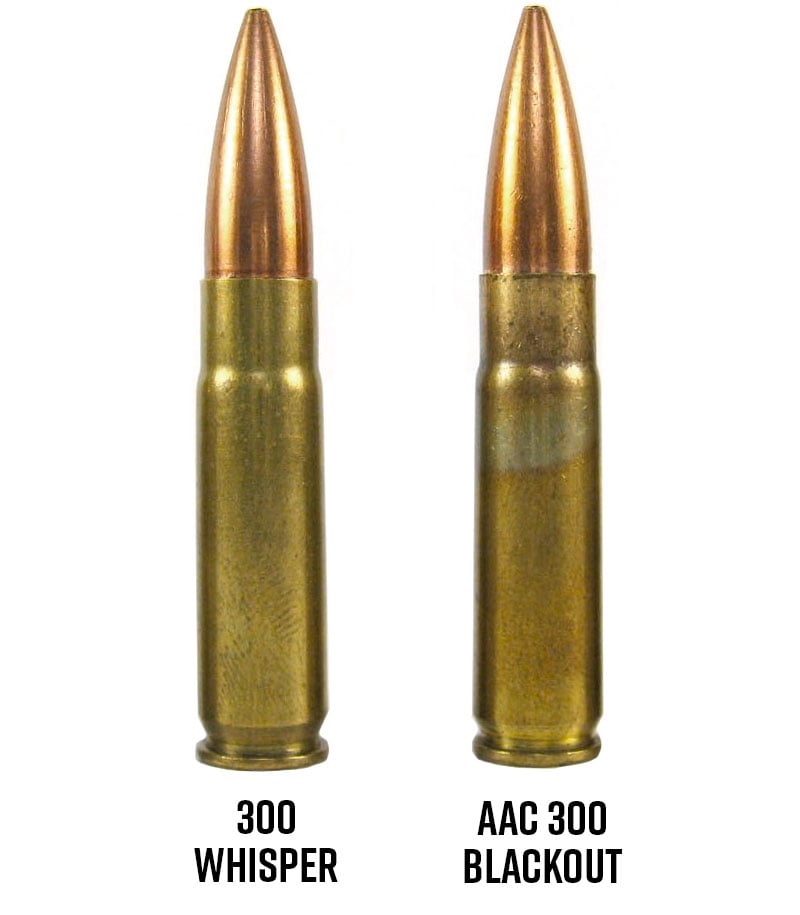
300 Whisper/AAC Blackout
The original 300 Whisper and newer, AAC 300 Blackout are essentially the same thing. Originally using a .221” Remington Fireball (222/223 Rem-based) case necked up to .308”, to give a short range, dual-role cartridge based around the AR15 platform. That and depending on bullet selection, can take you all the way from 110 to 220-grains. To offer either a true, big bore sub-sonic with a 208-grain A-MAX at a modest 1020 fps/482 ft/lbs, or a 110-grain non-lead GMX at 2350 fps/1359 ft/lbs. As can be seen the sub-sonic is not even small deer legal, with the GMX good for those species but nothing bigger. Speed and energy are relative to barrel length. In the UK you can encounter it mainly in custom, straight-pull AR15s and break-barrel, single-shot actions. In sub-sonic form you can experience problems with bullet expansion, due to their heavier construction and low speed. Hornady offers their Sub-X bullet. Lead-cored and long grooves in the jacket combine with the patented Flex Tip® insert within its hollow point cavity to help it expand reliably at low velocities.
30 US Carbine
Another old timer, the 30 Carbine was developed in WWII as a replacement for the Colt 1911A1 pistol in 45 ACP. The end result was the M1 Carbine, this 16” self-loader proved popular and launched the ammunition into a range of sporting firearms. Firing a 110-grain, round-nosed full metal jacket (FMJ) bullet at around 2000 fps, it’s very specialised, but has been chambered in straight-pull M1 Carbines, AR15s and bolt-actions mainly for Action-type shooting in the UK, such as Gallery Rifle. Factory ammo is available, but most users go down the reloading route, which can improve performance.
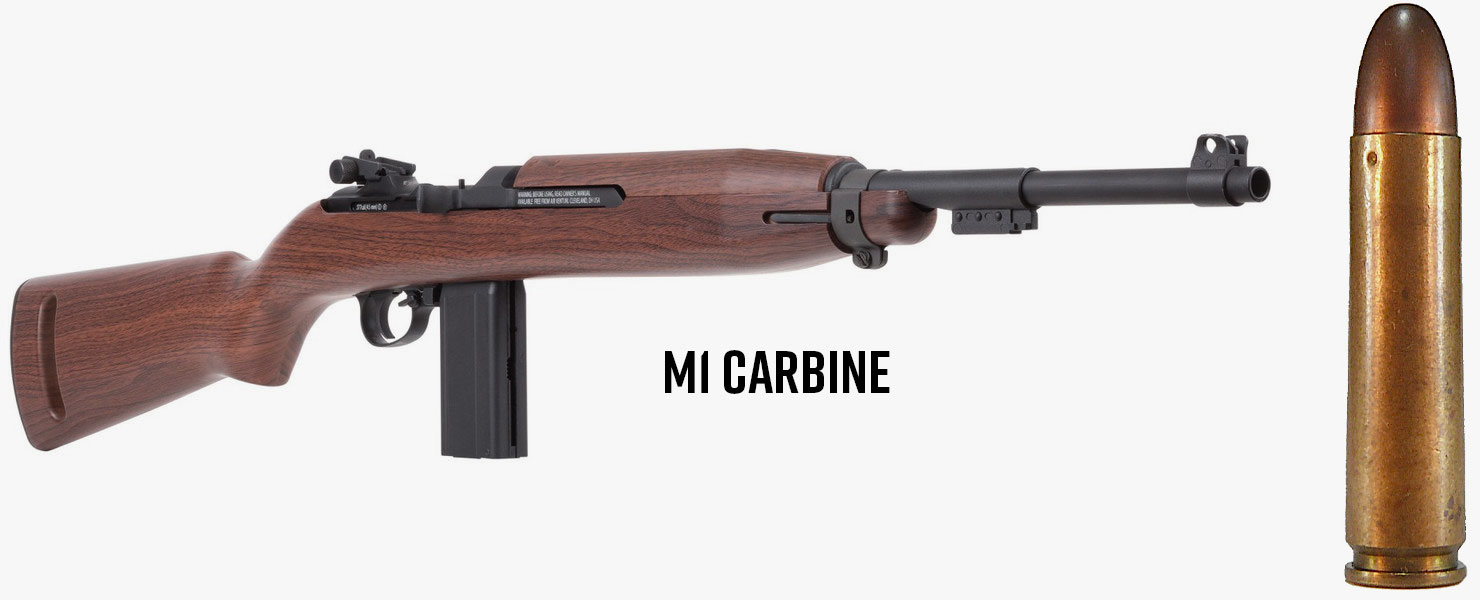
All Rounders
30-40 Krag
Despite its age and rimmed design, the 30-40 Krag still has a following for both hunting and more classic shooting events in rifles like the original Danish M1889 and the US Model 1896 and 1898 and the Winchester 1895 lever-action. Plus, some modern US sporting rifles offer this chambering, which has generated new factory ammunition. In terms of power, it can launch a 150-grain bullet at around 2300/500 fps up to a 220-grain at 2000 fps. Modest, but effective velocities. This perhaps is more a calibre for the reloader, certainly in the UK, who wants a classic cartridge that can still do the business. A look at the data shows a good selection of bullet weights and types.

308 Winchester
Despite more modern cartridges like the 6.5 Creedmoor etc., the generic 308 Winchester is probably the greatest .30” calibre ammunition success of the 20th and now 21st century. Like most great calibres, it was an outgrowth of military development. Although the 30-06 Springfield served the US military from before WW1 to Korea and beyond. There was a need for a shorter cartridge that was more compatible with lighter/shorter semi and full auto firearms and increased magazine capacities. In 1954 the experimental T65E5 was adopted by the US and soon became the 7.62x51mm, the NATO standard for rifles and light to medium machine guns, firing a 147-grain, FMJ Spitzer bullet at 2800 fps/2559 ft/lbs. This development ran near parallel to the sporting market, with Winchester, two years earlier, introducing the 308 Winchester and it’s still going strong 70-years later.
Its inspiration came from the 300 Savage, which for a mid-1920s design was ahead of its time. Seen by many as a shortened 30-06 it’s probably the ultimate all-rounder and offers similar, if slightly lower performance. Plus, it uses a short-action receiver, which means a lighter, handier firearm. Bullet weights and types offer 110 through to 220-grains, making the 308 good for any task from foxing, small, medium and big game to long range, be it hunting or target. It’s also very, barrel-length tolerant, when compared to other calibres with 22” seeming to get the best out of it for most needs, but is still viable at 20”, or even shorter.
NATO spec 7.62x51mm seems interchangeable with 308 rifles and to a greater degree that is true, however, consider this! The .308 headspaces at 1.630 - 1.6340” and the 7.62 NATO is 1.6355 - 1.6405”. Meaning that 7.62 rifles have longer chambers by approx. 0.006”, maybe more given the make and specification, which aids reliable feeding in automatic mechanisms. So, there’s the possibility that pressures could increase if you put 7.62 in a 308. Vice versa; 308 brass can stretch more with the potential of failure or bulging. If you are going to go down that route, try a few rounds and see how it goes. On the reloading front, 7.62 brass is heavier due to thicker case walls, so you need to reduce top loads, as pressures could increase. Hornady’s 11th manual notes that a 308 Win with a 155-grain A-MAX bullet shows a maximum load of 45.8-grains of Vit N140 powder. Conversely, in their 7.62 service loading with the same bullet the max charge is reduced to 44.6-grains. You might think that’s insignificant, but it’s not.

30-06 Springfield
The 30-06 (aught six) has also carved a place for itself in the cartridge hall of fame, as one of the most versatile .30” calibres around. With a 56-year head start on the 308 Win, it has gained a massive and loyal following and is still one of the top choices from all rifle manufacturers today. And of all the older, military calibres that are still popular today: 6.5x55 Swedish, 7x57 and 8x57 Mauser it’s by far the best and most prolific. It uses the same range of bullet weights and types as the 308 Win, and in sensible barrel lengths 23-24” does show higher ballistics, due to its greater powder capacity in its longer 63mm case, compared to the 51mm of the 308. But requires a long action receiver build and is not so barrel length tolerant and dropping below 22” is not a good idea. Doing a velocity comparison, (data from Hornady’s 11th reloading manual) a 22” 308 Win firing a 165-grain Hornady SST bullet uses 42.8-grains of IMR 4064 for 2600 fps and 2489 ft/lbs. A 23.75” 30-06, uses 51.9-grains of IMR 4064 for an impressive 2800 fps at 2886 ft/lbs. In the right barrel length, if you’re looking for more ability in what is still a reasonably, user-friendly rifle/cartridge combo, that for the hunter can pretty much drop any game on the planet, big or small, given the correct bullet choice. So, and before you consider the more powerful .30 magnums, look at the old ‘aught six’, as it will probably be all you ever need anywhere you go in the world.
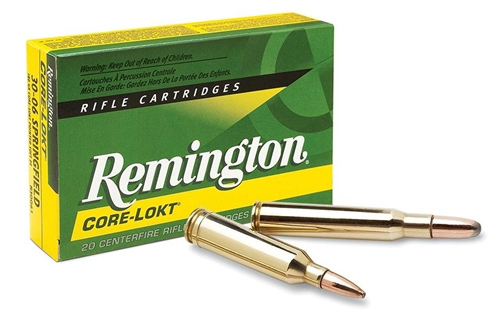
300 PRC
Given the 300 Win Mag is probably one of the most popular older magnums, and the fact that ballistic thinking and cartridge design has moved on apace. Then Hornady’s latest creation the 300 Precision Rifle Cartridge (300 PRC) is a great example of modern thinking and applications. It was designed from the ground up, as a perfect concept, that balanced good design, efficient propellant use and the ability to shoot high BC bullets accurately out to extended ranges. Given bullet weight, it exceeds 300 Win Mag velocities, between 50 and 100 fps. Using a 225-grain ELD Match bullet (G1 BC 0.777) the Winchester produces 2800 fps/3843 ft/lbs. The PRC 2850 fps/4069 ft/lbs. Not an amazing increase, but a definite improvement, plus, a far more efficient design all-round.
So whats right for you?
Shooting well, is all about knowing your target/quarry and putting the right bullet, in the right place, with the right equipment and it’s here where the magnums role really is. Longer range ability and accuracy, with high BC bullets requires more fuel, hence their larger, powder capacity and build, which as we shall see is achieved in two ways. And although there are many magnums in many calibres available, the generic .308” again shows itself as a highly versatile performer, that proves an excellent choice for many of the above roles, in terms of potential.
Hornady lists 11 Magnum .30s: 300 H&H Magnum, 300 Win Mag, 300 WSM, 300 RCM, 300 Remington SAUM, 300 Remington RUM, 300 Weatherby Magnum and Weatherby 30-378, 300 Lapua Magnum, 300 Norma Magnum and Hornady 300 PRC. We have taken what we consider the most available and sensible to illustrate the marque. There’s a lot to choose from and you need to do your homework to make the right decision, as to if you really need, not want, something that powerful.
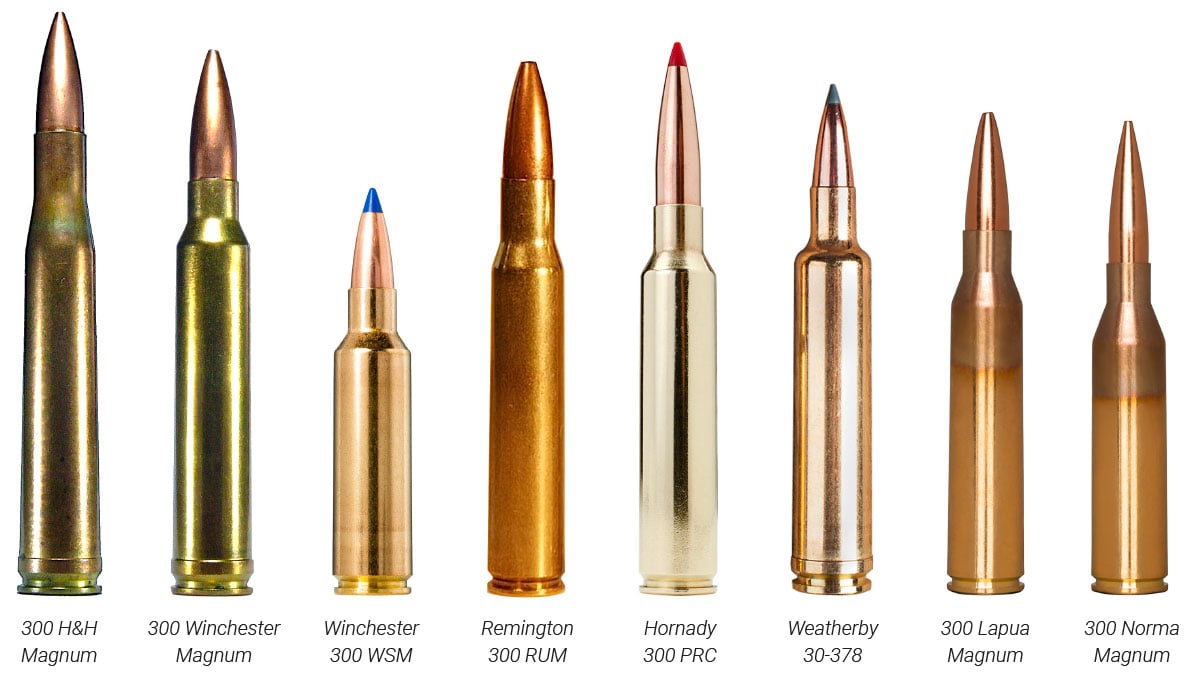
300 Win Mag
Introduced in 1963, another true modern classic and perhaps the best, most popular and probably practical, of the old school designs! Using a modified 375 H&H case it can handle a wide range of bullets (110-225-grains), so is good for most needs and can fit into a standard, long action receiver. With a 150-grain bullet expect 3300 fps/3645 ft/lbs and 2800 fps/3930 ft/lbs with the 225-grain. In terms of UK availability, it’s normally a stock item in most good gun shops.
300 Winchester Short Magnum
This is probably the first of the more modern concepts. Launched in 2001, it was designed to offer 300 Win Mag performance in a more compact rifle. As performance and ammunition size allow it to fit into a standard, short-action (308 Win length) receiver. It achieves this by literally being short and fat and uses a heavily, modified 404 Jeffery case to do it.
The build positions the powder column nearer the primer and offers a greater cross sectional area for a more efficient burn. In theory, it should mean you can achieve less with more: Hornady notes that with a 178-grain ELDX bullet, 64-grains of Alliant Reloader 17 generates 3000 fps/3571 ft/lbs from a 24”WSM. To achieve this the Win Mag needs 68-grains and a 25” tube. In use the WSM can show very high bolt thrust levels, which can make unlocking and primary extraction difficult, a trait seen across its whole calibre range.
300 SAUM
Almost identical in design and performance is Remington’s Short Action Ultra Magnum (SAUM), figures show the WSM marginally beats it on ballistics. However, the SAUM does not have the same bolt thrust issues.
However, not all shorts have succeeded. Launched in 2007, the 300 RCM (Ruger Compact Magnum) was a joint design between Ruger and Hornady and similar in concept to the WSM and SAUM, but designed for a 20” barrel. With the 178-grain ELD-X it generates 2900 fps/3376 ft/lbs. It, like its bigger brother the 338 RCM did not prosper, and Ruger shows neither calibre in their rifle lists today.
300 PRC
Given the 300 Win Mag is probably one of the most popular older magnums, and the fact that ballistic thinking and cartridge design has moved on apace. Then Hornady’s latest creation the 300 Precision Rifle Cartridge (300 PRC) is a great example of modern thinking and applications. It was designed from the ground up, as a perfect concept, that balanced good design, efficient propellant use and the ability to shoot high BC bullets accurately out to extended ranges.
Given bullet weight, it exceeds 300 Win Mag velocities, between 50 and 100 fps. Using a 225-grain ELD Match bullet (G1 BC 0.777) the Winchester produces 2800 fps/3843 ft/lbs. The PRC 2850 fps/4069 ft/lbs. Not an amazing increase, but a definite improvement, plus, a far more efficient design all-round.
Rimmed and not .30s
Apart from the aforementioned 30-40 Krag, which is a true 308”, in the UK and depending on what sort of shooting you do, you can encounter two old timers, both rimmed. Which, and as already mentioned use bullets of 0.310 to 0.312” diameter.
The 303 British was our service cartridge from its inception in 1888 where early examples used blackpowder, which was soon change to smokeless and served until the late 1950s, when replaced by the 7.62x51mm NATO. It’s not particularly efficient or naturally accurate, but served well in its military and sporting role amongst Commonwealth countries and in Great Britain. Although expanding ammunition exists, it’s a rare choice for hunting these days. Saying that, Uberti recently launched their Courtney Hunter single shot rifle chambered in 303. Today it’s mainly used by classic shooters for target shooting, in Lee Enfield SMLEs, No 4 and similar rifles.
The Russian 7.6x54R (rimmed) is a bit of an anachronism. Designed in 1891 for the Mosin Nagant service rifle, it’s the only rimmed cartridge that is still in military use today, with countries of the ex-Communist Bloc in the PK series of medium machine guns and Dragunov-style sniper rifles. Plus is still a popular hunting calibre in many countries including Finland. For an old timer it compares well to the 308 Win.
However, in the UK, both are mainly used in Classic shooting events in rifles like the Lee Enfield series and Mosin Nagant 1891 bolt actions and its derivatives. Serbian ammunition manufacture Prvi Partizan PPU offers both soft tip and FMJ ammo.
Odd Balls
Like any calibre group there are always some unusual innovations. 308” sub-sonics have become popular as illustrated by the 300 Whisper/Blackout. There are also an increasing number of 308 Win loads offering this possibility. Caveats here are, bullet stability, energy levels and expansion. In truth a bit specialised, especially with the choice of effective sound moderators that use standard velocity ammo more efficiently.
Something you might come across is Remington’s Accelerator. No longer in production, it was designed as a .224” calibre varmint cartridge using unmodified 30-30, 308 Win and 30-06 cases. In effect turning your .30 calibre deer gun into a .22” varminter. The idea was simple with a 55-grain JSP bullet encased in a .30” calibre, polymer sabot, that rode the bore and imparted the spin, then fell away after leaving the muzzle.
Factory figures were impressive: 30-30 - 3400 fps/1412 ft/lbs, 308 Win - 3770 fps/1735 ft/lbs and 30-06 - 4080 fps/2003 ft/lbs. Sounds good, but general accuracy was poor with 2MOA being a tight group, not what you need for varminting. Today you can still buy sabots and reload your own, for what it’s worth!
Another innovation, again from Remington was the etronX , electrically-fired rifle. The concept was clever, as it did away with a mechanical firing pin system and replaced it with a firing needle assembly (FNA). Similar to what modern battle tanks and artillery systems use. The idea was to reduce ‘lock time’ (the dwell between pulling the trigger and the bullet exiting the barrel), which improves accuracy potential. It used standard ammunition, but with a same sized, electric, instead of a percussion primer. With the bolt closed the FNA touched the primer and the trigger was a simple ON/OFF switch and exceptionally light and crisp, powered by an on-board battery. In truth a clever idea, Remington thought so too, as they even offered primers for handloading, but it never caught on. But we think that this idea will surface again in the future, maybe along with caseless ammunition.
We hope you have enjoyed the ‘Ultimate Guide’ and look out for others, which are in the pipeline.

Top Tips
- All magnum calibres will produce more recoil, so try before you buy to see if they suit, as more power won’t make you a better shot
- When choosing any rifle, you should balance bullet weight to rifling twist; the tighter the rate, the heavier bullet you can use
- Generally speaking, Magnum rifles are bigger and heavier
- High speed and energy
- Some calibres are not off-the-shelf in the UK, so if you fancy an exotic, reloading is the only avenue
- Shorter barrels in certain calibres, just waste the cartridges potential and for hunting can put them under the UK large deer legal 1700 ft/lbs
- When selecting a .30” option first understand what you want it to do, over or under gunning is not a solution
- Generally speaking, most .30 calibre cartridges will use a rifling twist rate of between 1-10” to 1-12”, the former being better for heavier weights and the latter for more standard types
- 7.62 NATO and 308 Win are pretty much interchangeable, but they also have their differences
- If you plan to hunt larger and more vital game than found in the UK, like wild boar or African plain’s game, the 30-06 gives you a bit more insurance over the 308 Win
Disclaimer
The information, including text, graphics, images and information expressed in this publication are general in nature. Viking Arms Ltd assumes no responsibility for the accuracy of the information contained on or available through this website or its suitability for any purpose and such information is subject to change without notice. You are encouraged to confirm any information obtained from or through this website with other sources. Information on this website may not constitute the most up to date legal or other information.
The opinions expressed in this publication are those of the authors. They do not purport to reflect the opinions or views of Viking Arms Ltd.
Head Office Address
Viking Arms Ltd, Summerbridge, Harrogate, North Yorkshire, HG3 4BW
Contact Details
Sales: 01423 780 810 (Ext 1)
Email: info@vikingarms.com
